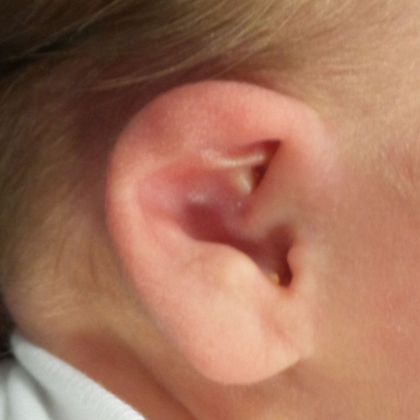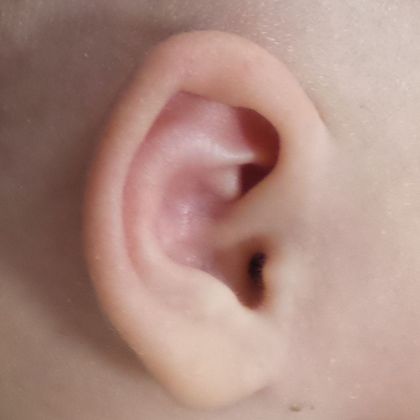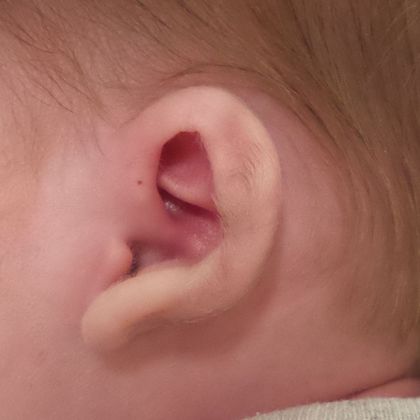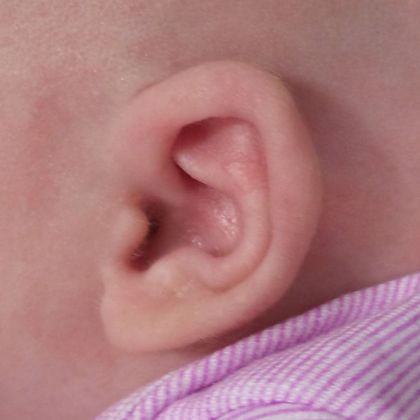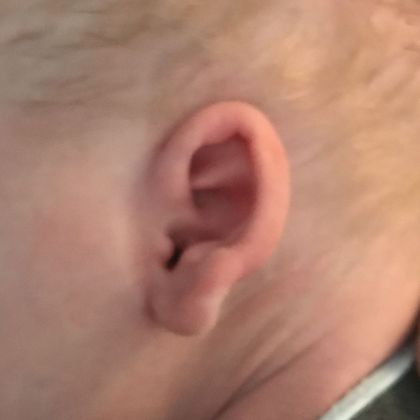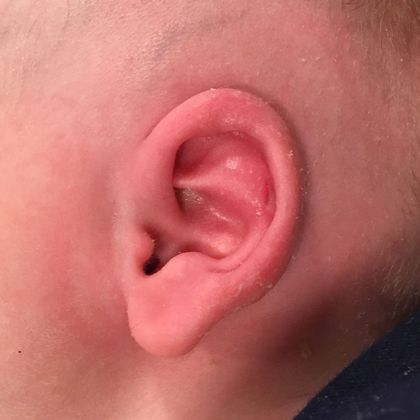Constricted ear deformities can cause your baby’s ear to appear cupped or folded and can be harmful to your baby’s appearance and health. At Dr. Jandali’s office, he works with several external ear molding devices to correct constricted ear deformities.
What Are Constricted Ear Deformities?
Constricted and cupped ears are types of infant ear deformities that involve the outer rim of the ear, also known as the helical rim. For infants with constricted ears, the outer portion of their ear will appear tight and folded inward to some degree. This condition can range from mild to severe, and in severe cases, the helical rim forms a tight roll, causing the upper ear to form a cup shape.
Sometimes constricted ear deformities can appear similar to lidding deformities; the difference is that constricted ears involve a partial absence of cartilage and skin along the ear, while lidding ears don’t have any cartilage missing.
While the exact cause of constricted ears is unknown, most of these ear deformities are caused by some form of tissue deficiency. This condition can be present in type 1 and type 2 microtia, leading to a very visible abnormal shape of the ear.
Non-Surgical Correction in Babies with Constricted or Cupped Ear Deformities
Ear molding is one of the best treatments for constricted ears when started early after birth. Ear molding is a non-surgical treatment that helps reshape the ear using a silicone prosthesis. The prosthetic is placed along the outer helical rim and scapha areas of the ear for at least four to six weeks, gently stretching both the skin and the cartilage. Pulling the outer helical rim backwards can uncurl the tight skin and cartilage and reshape the ear to a healthy-looking shape.
For parents seeking options for their baby’s abnormal ear shape, ear molding can be the solution. As the best non-surgical treatment option for constricted ears, ear molding is considered a successful option due to its benefits:
- Responsive: Baby‘s ears have high levels of maternal estrogen, causing the ears to remain pliable and soft. Throughout their development, these levels will decline, rendering the ear less pliable.
- Painless: The malleability of your infant’s ear cartilage allows a painless solution for their deformities with a high success rate.
- Effective: Wearing a prosthesis device or mold for at least four to six weeks can often correct ear deformities. Depending on the severity of the deformity, reapplication with a new device can continue until a correction is achieved.
- Non-Surgical: Using these non-invasive methods to reshape the ear provides options for parents seeking to avoid a surgical approach.
Dr. Jandali will monitor the molding process during regular visits to ensure they develop ears that are naturally shaped and healthy. He has helped many babies achieve a normal ear appearance through the ear molding process. His experience ensures he’ll be able to address your concerns and provide the most effective treatment for your baby.
Ear Molding for Newborns with Constricted Ear Deformities
If you have a newborn with constricted or cupped ear deformities, then non-surgical ear molding can be your solution. Dr. Jandali offers ear molding treatments for newborn’s constricted ear deformities at his practice in Connecticut. Contact Dr. Jandali to discuss your baby’s treatment options and for more information. If you wish to learn more, consult your pediatrician to learn whether your baby is a candidate for ear molding.
Constricted / Cup Correction Gallery
